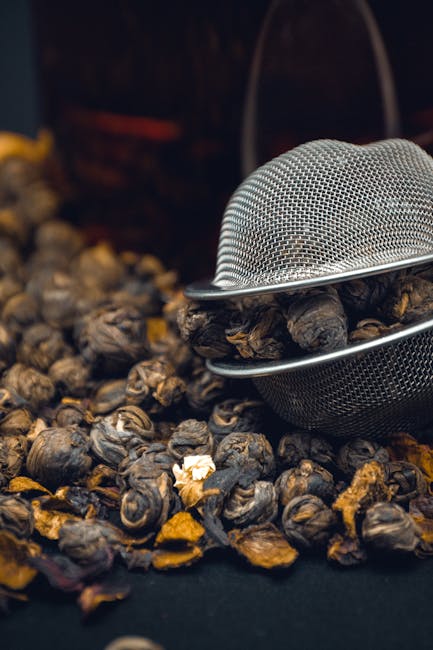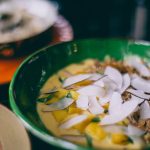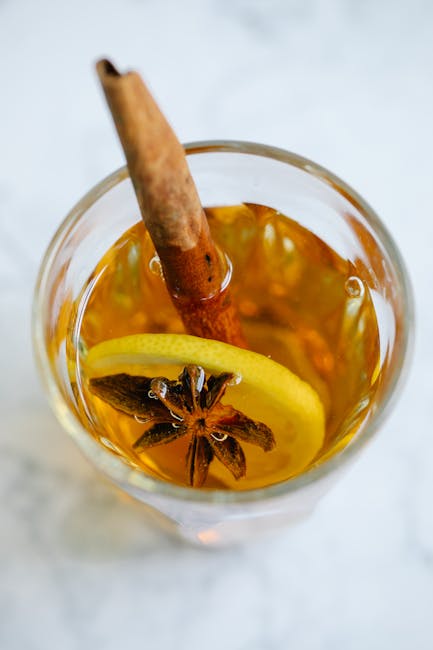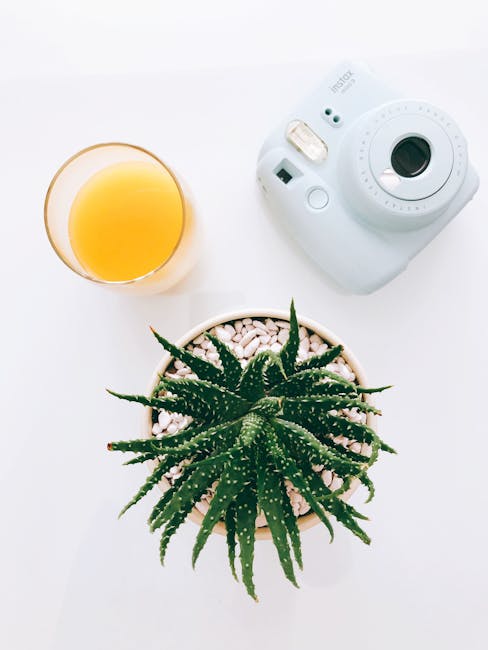The concept of herbal teas for detoxification is deeply rooted in ancient traditions, spanning millennia and diverse cultures. While the precise origin is difficult to pinpoint, evidence suggests that the use of plants for medicinal and cleansing purposes dates back to prehistoric times. Ancient civilizations, from the Egyptians to the Chinese, meticulously documented the therapeutic properties of various herbs, incorporating them into their daily routines and rituals. Traditional Chinese Medicine (TCM), for instance, has a long-standing tradition of using herbal infusions for balancing the body’s energy (Qi) and promoting overall well-being, often as part of a larger detoxification regimen. These practices were passed down through generations, evolving and adapting to local flora and cultural beliefs.
The popularity of herbal detox teas surged in recent years, driven by a growing awareness of the impact of toxins on health and a renewed interest in natural remedies. The global herbal tea market is booming, with estimates exceeding $16 billion in 2022 and projected to continue its growth trajectory. This surge reflects a shift in consumer preferences toward healthier lifestyles and a desire for natural alternatives to pharmaceutical solutions. However, it’s crucial to note that while many herbs possess beneficial properties, the term detox itself can be misleading. The human body has its own sophisticated detoxification systems, namely the liver and kidneys, which work tirelessly to eliminate waste. Herbal teas can support these systems by providing antioxidants and promoting healthy digestion, but they should not be considered a replacement for a balanced diet and healthy lifestyle choices.
Our Homemade Herbal Detox Tea recipe draws inspiration from various traditional practices, carefully selecting herbs known for their cleansing and restorative properties. Unlike commercially produced detox teas, which often contain artificial sweeteners, preservatives, and potentially harmful additives, our recipe emphasizes the use of whole, natural ingredients. We focus on herbs with established reputations for supporting liver function (like milk thistle), promoting healthy digestion (like ginger), and offering a rich source of antioxidants (like chamomile and peppermint). This blend aims to gently support the body’s natural detoxification processes, promoting a sense of well-being and overall vitality. The specific herbs used and their proportions can be adjusted to accommodate individual preferences and needs, offering a customizable and personalized approach to herbal wellness.
It’s important to remember that while herbal teas can be a beneficial addition to a healthy lifestyle, they are not a miracle cure. A balanced diet rich in fruits, vegetables, and whole grains, along with regular exercise and adequate hydration, remains crucial for optimal health and detoxification. Always consult with a healthcare professional before incorporating any new herbal remedies into your routine, especially if you have pre-existing health conditions or are taking medications. This Homemade Herbal Detox Tea recipe is intended for informational and educational purposes only and should not be considered medical advice.
Ingredients and Measurements
This Homemade Herbal Detox Tea recipe utilizes a blend of carefully selected herbs known for their potential detoxifying properties. The quantities listed below are for a single serving, easily scalable to make larger batches. Always ensure you are using high-quality, organic herbs whenever possible to minimize pesticide exposure and maximize the beneficial compounds. If purchasing pre-mixed blends, carefully examine the ingredient list to ensure it aligns with your preferences and health needs.
For one serving (approximately 8 ounces/240ml):
- Dried Burdock Root: 1 teaspoon (approx. 2 grams). Burdock root is traditionally used to support liver function and promote detoxification. It has a slightly earthy flavor.
- Dried Dandelion Root: 1 teaspoon (approx. 2 grams). Dandelion root is a well-known diuretic, aiding in the elimination of excess water and toxins from the body. It contributes a slightly bitter taste to the blend.
- Dried Milk Thistle Seeds: ½ teaspoon (approx. 1 gram). Milk thistle is renowned for its liver-protective properties, helping to support liver health and function during detoxification processes. The flavor is subtly sweet and nutty.
- Dried Peppermint Leaves: ½ teaspoon (approx. 1 gram). Peppermint adds a refreshing and soothing element to the tea, counteracting the bitterness of other ingredients and aiding digestion. Choose organic peppermint to avoid potential pesticide residues.
- Dried Ginger Root (optional): ¼ teaspoon (approx. 0.5 grams). Ginger adds a warming spice and can help soothe the digestive system. It’s optional, but recommended for those sensitive to the bitterness of other herbs.
- Filtered Water: 8 ounces (240ml). Using filtered water ensures you’re not ingesting any potential contaminants that could interfere with the detoxifying process. Avoid using tap water, especially if it has high chlorine or mineral content.
Important Considerations Regarding Measurements:
Accurate measurement is crucial for achieving the desired flavor and effectiveness of your herbal tea. Using a kitchen scale is highly recommended for precise measurements, especially when dealing with dried herbs. While teaspoons can be used, variations in packing density can lead to inconsistencies. If using a teaspoon, ensure you level it off to avoid adding excess herb.
Herb Sourcing and Quality:
The quality of your herbs significantly impacts the overall quality and effectiveness of your detox tea. Source your herbs from reputable suppliers who prioritize organic farming practices and rigorous quality control. Look for herbs that are clearly labeled with their origin and date of harvest. Properly stored herbs maintain their potency for longer periods. Store your herbs in airtight containers in a cool, dark, and dry place.
Disclaimer: This information is for educational purposes only and should not be considered medical advice. Consult with a healthcare professional before starting any new herbal remedies, especially if you have pre-existing health conditions or are taking medication.
Preparation of Herbs (Cleaning, Chopping)
Proper cleaning and chopping of your herbs is crucial for ensuring the safety and optimal flavor of your homemade herbal detox tea. Dirty herbs can introduce unwanted bacteria and pesticides into your brew, while inconsistent chopping can affect the infusion process and the overall taste.
Step 1: Selection and Inspection Begin by carefully selecting your herbs. Look for fresh, vibrant leaves and stems, free from blemishes, wilting, or discoloration. Discard any herbs that show signs of decay or damage. Avoid using herbs that have been stored for extended periods, as their potency and flavor may diminish.
Step 2: Washing the Herbs Thoroughly wash your herbs under cool, running water. Gently swish the herbs around in a colander to remove any loose dirt, debris, or insects. Do not soak the herbs for extended periods, as this can leach out essential oils and nutrients. For particularly delicate herbs like dill or cilantro, you can submerge them briefly in a bowl of water and gently agitate before rinsing.
Step 3: Patting Dry After washing, carefully pat the herbs dry using clean paper towels or a clean kitchen towel. Ensure the herbs are as dry as possible before chopping to prevent bruising and discoloration. Excess moisture can also lead to mold growth if the herbs are stored improperly.
Step 4: Chopping Techniques The size of your herb pieces will influence the strength and speed of the infusion. For a stronger, faster infusion, chop the herbs finely. For a milder, gentler infusion, chop them coarsely. Generally, aim for a consistent chop size for even extraction.
For finely chopped herbs (recommended for most detox teas): Use a sharp knife and chop the herbs into pieces about 1/4 inch (6mm) in size. For larger quantities, consider using a food processor with the pulse function to minimize bruising. Pulse the herbs in short bursts to avoid over-processing and turning them into a mush.
For coarsely chopped herbs: Use a sharp knife to roughly chop the herbs into ½ inch (12mm) pieces. This is suitable for herbs with tougher stems or when a slightly less intense flavor is desired.
Quantity Guide (Example): For a typical 1-quart (1 liter) batch of herbal detox tea, you might use approximately 1 to 2 ounces (30-60 grams) of fresh herbs. This quantity can be adjusted based on your personal preference and the potency of the herbs used. Always start with a smaller amount and add more if needed, as it’s easier to add more than to remove it.
Storage of Prepared Herbs: If you are not using the chopped herbs immediately, store them in an airtight container in the refrigerator. They are best used within 1-2 days for optimal freshness and flavor. Freezing chopped herbs is also an option, but it can slightly affect their texture and flavor.
By following these steps, you can ensure that your herbs are properly prepared for making a delicious and effective homemade herbal detox tea.
Steeping Instructions for Homemade Herbal Detox Tea
Achieving the optimal flavor and health benefits from your homemade herbal detox tea requires careful attention to the steeping process. The following instructions provide a detailed guide to ensure you extract the maximum goodness from your carefully crafted blend. Remember that these are guidelines, and you may need to adjust steeping times based on your personal preference and the specific herbs used in your blend.
Choosing Your Steeping Vessel: For best results, use a heat-resistant glass or ceramic teapot or infuser. Avoid using metal containers as they can react with certain herbs and alter the flavor. A French press can also be utilized, but be mindful of over-steeping, as prolonged contact with the herbs can lead to bitterness.
Water Temperature: The water temperature significantly impacts the taste and effectiveness of your tea. Boiling water (212°F or 100°C) is generally too hot for most herbal blends, as it can scorch delicate herbs and result in a bitter taste. Instead, bring your water to a boil, then remove it from the heat and let it cool for a few minutes. The ideal temperature for most herbal teas is between 180°F (82°C) and 200°F (93°C). Using a thermometer will ensure accuracy.
Herb-to-Water Ratio: A good starting point is using 1-2 teaspoons of your dried herbal blend per 8 ounces (240ml) of water. For a stronger brew, you can increase the amount of herbs; however, excessive herbs can lead to a bitter and unpleasant taste. Experiment to find the perfect ratio that suits your palate. If using fresh herbs, you may need to use a larger quantity, approximately 2-3 times the amount of dried herbs.
Steeping Time: The steeping time is crucial for extracting the desired flavors and beneficial compounds. Over-steeping can result in a bitter and harsh tea, while under-steeping may not fully release the herbs’ potential. A general guideline is to steep your tea for 5-10 minutes. However, this can vary significantly depending on the herbs used. Delicate herbs like chamomile may only need 5 minutes, while more robust herbs like ginger might benefit from a longer steeping time of up to 15 minutes. Always start with the shorter steeping time and adjust to your preference.
Multiple Steepings: Some herbal blends can be steeped multiple times to extract more flavor and beneficial compounds. After the initial steeping, you can pour the tea into a separate container and add fresh, hot water to the herbs for a second steep. This second steep will generally be less potent than the first but still offers a pleasant taste. Avoid steeping the same herbs more than three times, as this can lead to excessive bitterness.
Strain and Enjoy: Once the steeping time is complete, carefully remove the herbs from the water using a strainer or infuser. Pour your delicious homemade herbal detox tea into your favorite mug and enjoy! Remember to consume your tea within a few hours of preparation for optimal freshness and flavor.
Cooling and Storage of Homemade Herbal Detox Tea
Proper cooling and storage are crucial for maintaining the quality, safety, and efficacy of your homemade herbal detox tea. Improper handling can lead to bacterial growth, loss of beneficial compounds, and a less-than-pleasant taste.
Immediately after brewing, allow your tea to cool completely. This is paramount to prevent bacterial proliferation. The ideal temperature for storage is below 40°F (4°C). Rapid cooling can be achieved by transferring the brewed tea from the pot into a shallow, wide container. This increases the surface area, facilitating faster heat dissipation. You can also place the container in an ice bath, stirring occasionally to expedite the cooling process. Avoid leaving the tea at room temperature for extended periods (more than 2 hours).
Once cooled, transfer your herbal detox tea to airtight containers. Glass containers are the best choice, as they are non-reactive and prevent leaching of chemicals into the tea. Avoid using metallic containers, especially those made of aluminum or reactive metals, as they can interact with the tea’s components and alter its taste and potentially its chemical composition. Ensure the container is thoroughly clean and dry before pouring in the tea to prevent contamination.
Proper portioning is key for optimal storage. It’s advisable to store the tea in smaller containers rather than one large one. This minimizes exposure to air each time you need a serving, thus preserving freshness and reducing the risk of spoilage. For example, if you’ve brewed a large batch (e.g., 1 liter), divide it into four 250ml containers for storage. Label each container with the date of brewing.
Refrigeration is the recommended storage method for homemade herbal detox tea. Store your tea in the refrigerator at a temperature below 40°F (4°C). Under these conditions, your tea should remain safe and palatable for 3-5 days. After 5 days, discard any remaining tea, even if it still appears and smells fine. The risk of bacterial growth increases significantly beyond this timeframe.
Freezing is another option for longer-term storage. If you’ve brewed a large batch and don’t anticipate consuming it within a week, you can freeze it. Pour the cooled tea into freezer-safe containers, leaving some headspace to accommodate expansion during freezing. Label the containers clearly with the date and contents. Frozen herbal detox tea can generally be stored for 2-3 months without significant loss of quality. When ready to use, thaw it completely in the refrigerator overnight and reheat gently before consuming. Do not refreeze thawed tea.
Avoid storing your herbal detox tea in direct sunlight or near heat sources. Exposure to light and heat can degrade the active compounds in the tea, diminishing its effectiveness and potentially altering its flavor. Choose a cool, dark location in your refrigerator for optimal storage.
Always observe the tea’s appearance, smell, and taste before consumption. If you notice any unusual changes – such as mold growth, off-odors, or a sour taste – discard the tea immediately. Your health and safety are paramount. Following these guidelines will help you enjoy a safe and effective homemade herbal detox tea experience.
Serving Suggestions
Enjoy your Homemade Herbal Detox Tea in a variety of ways to maximize its benefits and suit your personal preferences. The following suggestions offer guidance on optimal serving temperatures, additions, and frequency for a fulfilling and effective detox experience.
Optimal Serving Temperature: For the best flavor and to fully extract the beneficial compounds from your herbs, we recommend serving your tea at a temperature between 180-200°F (82-93°C). Boiling water can sometimes make the tea taste bitter, so allow the water to cool slightly before steeping. Using a thermometer is a great way to ensure consistent results.
Standard Serving Size: A standard serving size is approximately 8 ounces (240ml). This provides a sufficient amount of the herbal infusion without overwhelming your palate. You can adjust this amount according to your individual needs and preferences, but start with 8 ounces and adjust as needed.
Steeping Time: The steeping time depends on the herbs used in your blend. Generally, a steeping time of 5-7 minutes is ideal for most herbal combinations. However, some herbs may require longer or shorter steeping times to achieve optimal flavor and potency. Always refer to the specific instructions for your particular herbal blend. If you are unsure, start with a shorter steeping time and gradually increase it until you achieve your desired strength.
Sweeteners and Additives: While many find the natural flavor of the herbal tea pleasant, you can personalize your drink with various additions. We recommend avoiding refined sugars as they can counteract the detoxifying effects of the tea. Consider using natural sweeteners like a small amount of honey, maple syrup, or stevia, if desired. A squeeze of fresh lemon or lime can also enhance the flavor and add a refreshing zing. A cinnamon stick or a few slices of ginger can also complement the herbal notes and provide additional health benefits.
Frequency of Consumption: For a detoxifying effect, it’s recommended to drink 2-3 cups of your Homemade Herbal Detox Tea daily. Spread your intake throughout the day, avoiding consuming large quantities before bedtime to prevent sleep disturbances. Listen to your body and adjust your intake accordingly. If you experience any adverse effects, reduce your consumption or consult a healthcare professional.
Combining with Other Beverages: You can incorporate your Herbal Detox Tea into your daily routine by replacing sugary drinks or caffeinated beverages. It can be a refreshing alternative to coffee or soda, providing a healthy and flavorful boost. Consider adding it to smoothies or using it as a base for iced tea. The possibilities are endless!
Storage: Store your brewed tea in an airtight container in the refrigerator for up to 2 days. However, we recommend brewing fresh tea daily for optimal flavor and freshness. This ensures that the beneficial properties of the herbs are fully preserved.
Important Note: While this tea is designed to support detoxification, it is not a replacement for a healthy diet and lifestyle. Consult your healthcare provider before starting any new detox program, especially if you have pre-existing health conditions or are taking medication.
Possible Variations and Additions
The beauty of herbal detox teas lies in their customizability. The base recipe provided is a great starting point, but you can easily tailor it to your specific needs and preferences by adding or substituting herbs. Remember to always consult with a healthcare professional before making significant dietary changes, especially if you have underlying health conditions or are taking medication.
Adding other herbs: Many herbs complement the detoxifying properties of the base recipe. For example, adding 1 teaspoon of dried dandelion root can enhance liver function and aid in detoxification. Similarly, 1 teaspoon of dried milk thistle can support liver health and protect against damage. If you’re looking to boost the diuretic effect, consider adding ½ teaspoon of dried hibiscus flowers or 1 teaspoon of dried corn silk. For a more calming and relaxing tea, incorporate 1 teaspoon of chamomile or lavender.
Increasing the intensity: If you desire a stronger detoxifying effect, you can increase the quantity of the base herbs. However, do not exceed double the recommended amounts without consulting a healthcare professional. Overdoing it can lead to undesirable side effects like digestive upset or other complications. A gradual increase in the herb quantities is always recommended. Start by adding a small extra amount (e.g., ¼ teaspoon) and monitor your body’s response before increasing further.
Flavor enhancements: While the natural flavors of the herbs are pleasant, you can add other elements to enhance the taste. A small slice of fresh ginger (about 1 inch) can add a spicy kick and boost the anti-inflammatory properties. A squeeze of lemon juice adds a refreshing citrus note. For sweetness, consider adding a teaspoon of honey or maple syrup after steeping, but avoid adding sweeteners during the steeping process as this can hinder the extraction of beneficial compounds from the herbs. A few fresh mint leaves can also provide a refreshing twist.
Creating blends: Experiment with creating your own unique blends! For example, a blend focusing on lymphatic drainage could include burdock root (1 tsp), cleavers (1 tsp), and red clover blossoms (1 tsp). A blend focused on digestive health might incorporate peppermint (1 tsp), ginger (1 tsp), and fennel seeds (½ tsp). Remember to research the properties of each herb before combining them to ensure they work synergistically and don’t have any contraindications.
Important Considerations: Always use high-quality, organically grown herbs whenever possible to minimize exposure to pesticides and other harmful chemicals. Proper storage is crucial to maintain the potency of your herbs; store them in airtight containers in a cool, dark, and dry place. Finally, remember that detox teas are supportive tools, not miracle cures. A healthy diet, regular exercise, and sufficient hydration are essential components of a holistic detoxification approach. Consult with a healthcare professional or registered dietitian to discuss the best approach for your individual needs.
Homemade Herbal Detox Tea: Recommendations
This Homemade Herbal Detox Tea is designed to be a delicious and refreshing way to support your overall well-being. Remember that this tea is not a replacement for medical advice and should not be considered a cure for any illness. Always consult your doctor before starting any new dietary regimen, especially if you have pre-existing health conditions or are taking medication.
Serving Suggestions: Enjoy this tea warm or chilled, depending on your preference. For a warm serving, simply steep the tea bag or loose herbs as directed and pour into your favorite mug. For a chilled version, prepare a larger batch of tea, allow it to cool completely, and refrigerate for later. Add a splash of lemon or lime juice for an extra zing, or a touch of honey or maple syrup to sweeten (use sparingly to maintain the detoxifying properties).
Storage Conditions: For optimal freshness and flavor, store your loose herbal tea blend in an airtight container in a cool, dark, and dry place. This will help to prevent oxidation and maintain the potency of the herbs. If using tea bags, store them in a similar manner. Proper storage can extend the shelf life of your tea by several months.
Complementary Dishes: This detox tea pairs wonderfully with light and healthy meals. Consider pairing it with a vibrant salad featuring leafy greens, fresh vegetables, and a light vinaigrette. A bowl of warm lentil soup or a vegetable-based stir-fry are also excellent complements. Avoid heavy, greasy, or processed foods that may counteract the beneficial effects of the tea.
Nutritional Information (per 8oz serving, approximate values will vary depending on specific herbs used):
- Calories: Approximately 5-10 calories (depending on added sweeteners)
- Fat: Negligible
- Carbohydrates: Negligible to low (depending on added sweeteners)
- Protein: Negligible
- Vitamins and Minerals: The nutritional content will vary depending on the specific herbs included in the blend. Many herbal teas are rich in antioxidants and other beneficial compounds. Check the nutritional information of the individual herbs used to get a more precise overview.
Important Considerations:
- Pregnancy and Lactation: Consult your doctor before consuming herbal teas during pregnancy or while breastfeeding, as some herbs may not be safe.
- Allergies: Be aware of any potential allergies to the herbs used in the blend. Always check the ingredient list carefully.
- Medication Interactions: Some herbal teas may interact with certain medications. Consult your doctor or pharmacist if you are taking any medications.
- Moderation: While this tea can be a beneficial addition to a healthy lifestyle, it’s important to drink it in moderation. Excessive consumption of any tea may lead to unwanted side effects.
Enjoy your Homemade Herbal Detox Tea as part of a balanced and healthy lifestyle!





